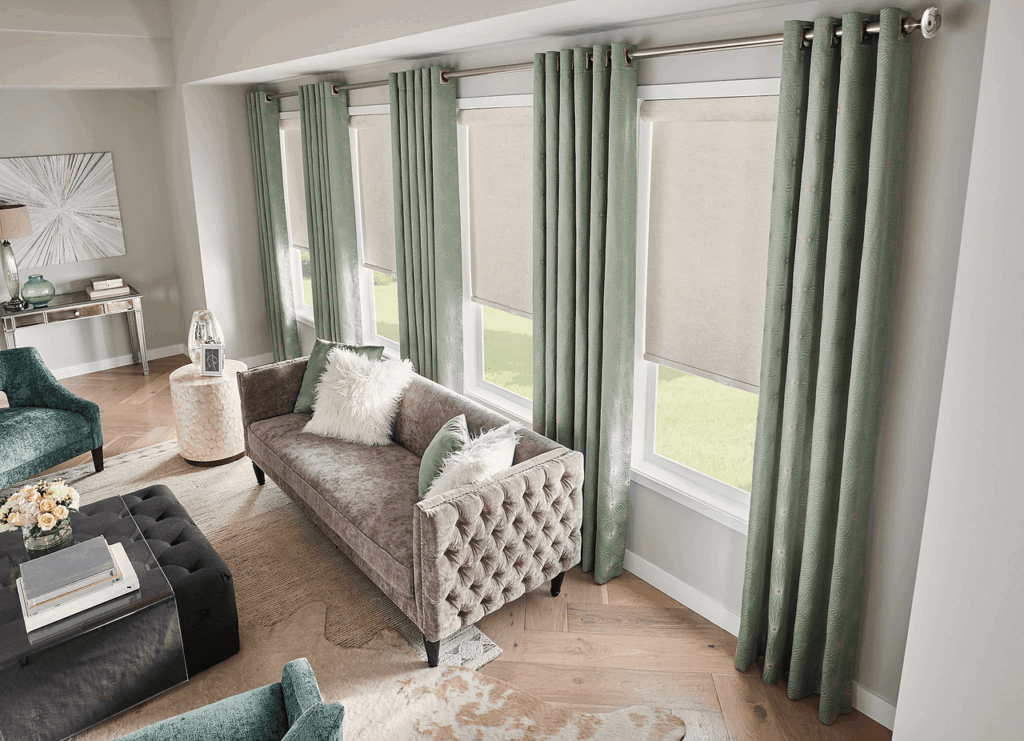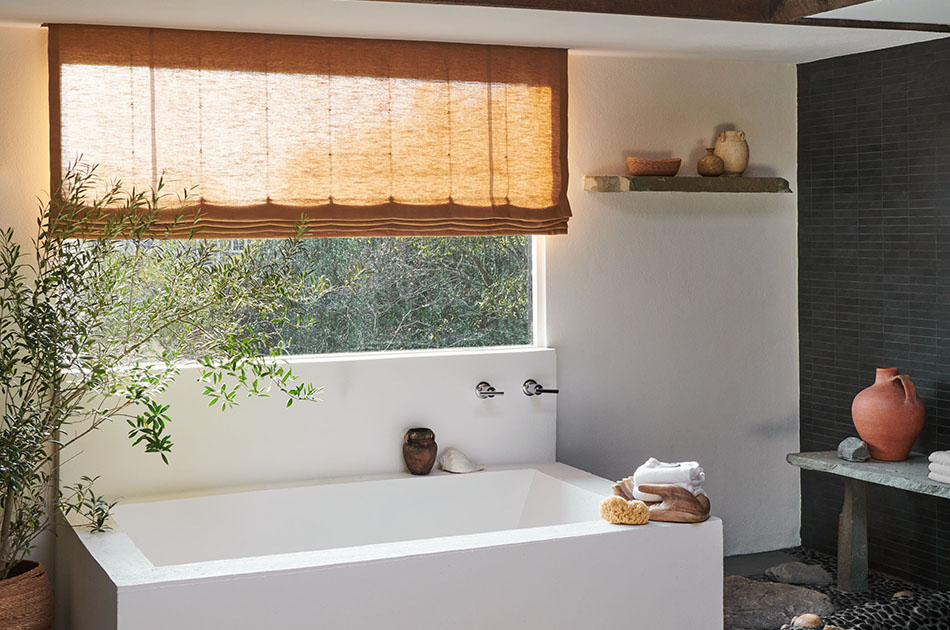Eco-Friendly Fabrics and Sustainable Options for Custom Draperies

Are your window treatments as green as the view outside? As people become more conscious of their environmental impact, choosing eco-friendly fabrics and sustainable options for custom draperies has never been more important. In this guide, we’ll walk you through why sustainability matters, which fabrics to look for, and how to design, source, and care for earth-friendly drapes that look stunning in any home.
Why Choose Sustainable Draperies?
Sustainability in home décor goes beyond reusable water bottles and energy-efficient appliances. Curtains and drapes use sizable amounts of fabric, dyes, and hardware, all of which carry an environmental footprint. By opting for greener textiles you can:
- Reduce resource consumption: Eco-friendly fibers often need less water, energy, and chemicals.
- Support ethical labor: Certified fabrics ensure fair wages and safe working conditions.
- Improve indoor air quality: Natural, low-VOC materials limit off-gassing of harmful chemicals.
- Lower waste: Durable fabrics last longer, and some can be recycled or composted.
Collectively, these benefits create a healthier home and planet—without sacrificing style.
Popular Eco-Friendly Fabrics
When shopping for sustainable drapery fabrics, you’ll encounter a variety of natural and recycled fibers. Each has unique advantages in feel, performance, and environmental impact.
1. Organic Cotton
Organic cotton is grown without synthetic pesticides or genetically modified seeds, drastically reducing chemical runoff and water contamination. It’s breathable, easy to dye, and comes in myriad weaves from lightweight voile to heavyweight twill—perfect for any room.
2. Linen
Made from the flax plant, linen requires minimal irrigation and fertilizer. The fabric’s slightly crisp texture and elegant drape make it a favorite for coastal or minimalist interiors. Over time, linen softens gracefully, adding character to your space.
3. Hemp
Hemp is a sustainability superstar. The plants grow quickly, need little water, and naturally resist pests. Hemp fiber yields strong, long-lasting textiles that provide excellent insulation. Blending hemp with organic cotton can soften its hand feel while retaining durability.
4. Bamboo (Closed-Loop Viscose)
Bamboo can be both eco-friendly and problematic. Look for bamboo processed in a closed-loop system, which captures and reuses solvents rather than releasing them into the environment. The resulting fabric is silky, antimicrobial, and ideal for bedrooms.
5. TENCEL™ Lyocell
TENCEL™ is produced from sustainably managed eucalyptus forests using closed-loop technology that recycles over 99% of water and solvents. It’s exceptionally smooth, drapes beautifully, and resists wrinkles—great for modern spaces.
6. Recycled Polyester
While traditional polyester is petroleum-based, recycled polyester (often from post-consumer plastic bottles) diverts waste from landfills and uses less energy in production. It’s strong, colorfast, and ideal when you need blackout or performance fabrics.
Read more: The Benefits of Investing in Custom Draperies Over Ready-Made Options
Key Certifications & Standards
Buzzwords can be misleading. To verify a fabric’s eco credentials, look for independent certifications:
- GOTS (Global Organic Textile Standard): Ensures organic status of fibers and socially responsible manufacturing.
- OEKO-TEX® STANDARD 100: Tests for harmful substances, guaranteeing a safer product for human use.
- Cradle to Cradle Certified®: Evaluates material health, recyclability, renewable energy use, and social fairness.
- GRS (Global Recycled Standard): Verifies recycled content and responsible production processes.
Choosing fabrics with these labels helps you trust the supply chain from farm to finished drape.
Design Considerations for Green Drapes
Sustainability doesn’t mean compromising aesthetics. Keep these tips in mind:
- Weave & Weight: Lightweight linens offer airy elegance, while heavier hemp blends provide insulation, reducing heating and cooling demands.
- Color Choices: Opt for undyed or low-impact dyed fabrics to limit chemical use. Natural hues pair effortlessly with diverse décor styles.
- Lining: A responsibly sourced cotton or recycled polyester lining can extend fabric life and enhance energy efficiency.
- Hardware: Select rods and rings made from FSC-certified wood or recycled metal to complete the sustainable package.
- Tailoring Style: Simple panel designs generate less waste compared to heavily pleated treatments.
Care & Maintenance Tips
Proper care extends the life of your draperies, maximizing the environmental benefits:
- Regular Dusting: Use a vacuum with a soft brush attachment to remove dust without frequent washing.
- Spot Clean: Address spills immediately with mild, biodegradable detergent.
- Gentle Washing: When full cleaning is necessary, choose cold water and eco-friendly laundry products. Line-dry whenever possible.
- Rotate Panels: Switching your curtains from left to right annually evens out sun exposure and wear.
These small habits keep fabrics vibrant and reduce the need for replacements.
Learn more: How Custom Draperies Can Improve Energy Efficiency in Your Home
How to Source Responsibly
Finding genuinely sustainable draperies involves more than picking the right fiber. Consider the entire supply chain:
- Ask Questions: Reputable suppliers share information on fiber origin, dyeing methods, and labor practices.
- Buy Local: Working with regional workrooms minimizes transportation emissions and supports local economies.
- Made-to-Measure: Custom sizing prevents waste and ensures optimal performance in light control and insulation.
- Upcycle & Reuse: Repurpose vintage linens or reuse existing blackout linings to conserve resources.
When in doubt, request fabric swatches to inspect quality and transparency documentation before committing.
Final Note
Eco-friendly draperies seamlessly blend sustainability with style. By prioritizing organic or recycled fabrics, verifying certifications, and embracing mindful design, you can create window treatments that beautify your home and benefit the environment. Whether you favor breezy linen sheers or richly textured hemp panels, every green choice makes a difference. Ready to refresh your windows sustainably? Explore certified fabrics, partner with an ethical workroom, and enjoy the view—guilt-free.
Frequently Asked Questions
Are eco-friendly draperies more expensive?
They can cost slightly more upfront due to certified materials and ethical labor, but their durability and energy savings often offset the initial investment.
Do sustainable fabrics fade faster?
No. High-quality natural and recycled fibers perform comparably to conventional fabrics, especially when paired with proper linings and UV-blocking treatments.
Can I achieve blackout with green fabrics?
Yes. Combine an organic cotton or recycled polyester blackout lining with your preferred eco fabric for optimal light control.
How do I dispose of old curtains responsibly?
Donate usable panels, repurpose them as drop cloths or fabric crafts, or recycle through textile collection programs where available.








